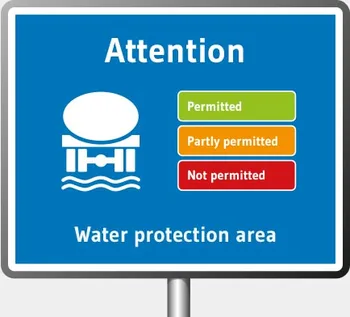Company locations
The whole picture – with just a single click. Find out here where our branches are located, what services they offer and how to contact them.
REMONDIS Group locations
Discover the world of REMONDIS with its approx. 900 branches and associated companies in over 30 countries across Europe, Africa, Asia and Australia.
Protection of ground and groundwater
The main areas of application for IBAA – roads, earthworks, concrete and landfill construction - are similar across all EU countries. In assessing the different national environmental regulations, one finds that they differ slightly regarding conditions for use. However, the underlying principle in all countries remains the same: The protection of the environment, especially the ground and groundwater. The environmental safety of secondary aggregates is regulated on a national level by defining site conditions as well as limit values regarding certain environmentally relevant parameters.
General environmental conditions for use
A solid set of technological regulation and detailed environmental rules comprises the framework in which GRANOVA is produced and used. Regarding the use of secondary construction material in roads or earthworks, national rules often comprise a differentiation of areas according to geological and hydrogeological site conditions (e.g. distance to ground water level, distance to water protection areas). Additionally, the kind of construction might be defined further, e.g. in certain areas, only the use of under watertight layers may be allowed. To get an impression of such rules, visit the detailed German page on environmental regulation as example here.

Decisive for the use of secondary aggregates such as IBA are hydrogeolocial and geological site conditions
Based on national regulations and site detail, the rules can become less strict, allowing for a wider field of application, for example, some countries permit a smaller distance to the ground water level dependent on geological and hydrogeological site conditions and type of construction.
Regarding the use in landfill construction, the EU landfill directive, together with national regulations, will define the detailed requirements.
Environmental testing
Secondary aggregates are always subject to rigorous environmental testing before further use. Leaching the material for a certain time in order to determine the possible emission of chemicals is a recognised and regular quality control measure. However, tests differ in the national details (e.g. grinding the material down before testing or kind of test used) and there are still ongoing discussions on a common EU test for leaching in order to control the quality and the amounts of chemicals that might have a negative environmental impact. For now, countries and the according regulators set their own tests and according limit values. We, as suppliers, deliver the material in accordance with these individual national demands.

As for the use in concrete, the monolithic leaching test is currently seen as an appropriate method to prove the environmental safety of the final product as this best represents the situation when the material is in service.
Quality control
The material qualities of GRANOVA are proven by third party quality systems. The monitoring systems include regular environmental controls on chemical properties, e.g. with leaching tests and on technological performance to prove applicability (grading, California Bearing Ratio, Los-Angeles co-efficient, freeze resistance etc.).



